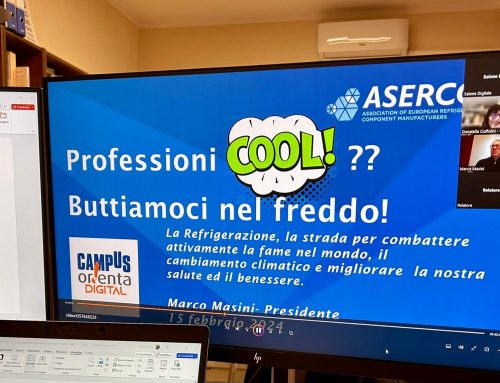Recently ASERCOM has formally submitted its position to ECHA on the Universal PFAS ban proposal, focusing primarily on aspects critically relevant to the refrigeration sector.
“To progress with decarbonization efforts within our industry, it is imperative to meticulously manage the entire PFAS dossier,” states Marco Masini, President of ASERCOM. “Transitioning to ‘natural refrigerants’ necessitates even more the use of fluoropolymers which are encompassed in this ban; hence, we are advocating for the introduction of exemptions for such materials.”
ASERCOM’s response to the ongoing consultations emphasizes the need for certain critical exemptions.
Dr. Heinz Juergensen, the PFAS Team Leader in ASERCOM, stresses, “The potential replacement of PFAS elements could, in numerous instances, necessitate substantial redesigns of entire individual parts and complete components. This re-design would result in further testing needs of the compressors and other main components as well as of the final equipment. Employing alternative substances for different refrigerants would escalate the variety of components managed in production, wholesale, and installation sites. This could elevate the risks of failures and damages arising from improper selections.”
Members of ASERCOM are collaboratively exploring alternative substances with their supply partners, though viable solutions achieving equal performance are not yet identified. The organization’s manufacturers are grappling with tribological concerns and intensifying conditions, such as elevated refrigerant discharge temperatures for heat pumps with R290, or low temperature refrigeration applications with CO2 at very high pressures.
“We’ve requested exemptions in the PFAS ban proposal to maintain energy efficiency and leverage the unique properties of fluoropolymers, for instance, adhering to GWP limits due to F-Gas regulations,” concludes Dr. Juergensen.
ASERCOM continues to work diligently to find balanced solutions, addressing environmental concerns while also ensuring the sustainability and efficacy of the HVAC&R industry components.






